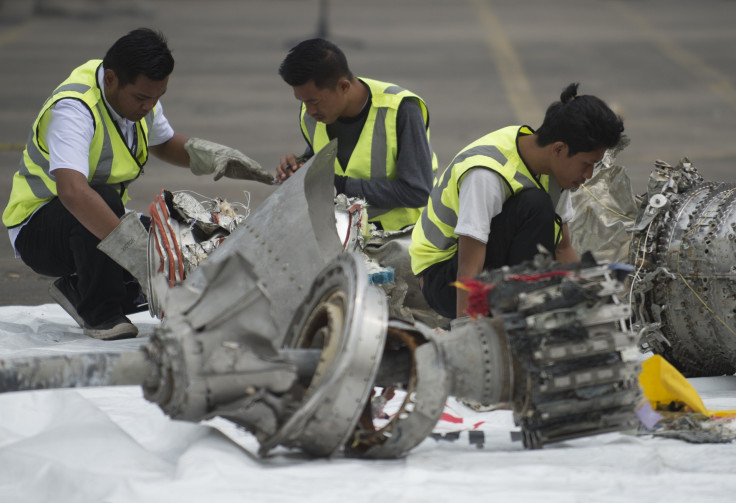Lion Air Pilots Struggled To Control Plane’s Nose 26 Times Before Crash

Pilots flying the ill-fated Lion Air plane which crashed into the Java Sea on Oct. 29, killing all 189 people on board, struggled to maintain control of the Boeing 737 MAX 8 aircraft whose automatic safety system made it repeatedly plunge toward the ground, a preliminary report released Wednesday said.
In the report submitted by National Transportation Safety Committee (NTSC) during a briefing to the Indonesian Parliament, investigators referred to the data collected from the recovered black box of the crashed plane that revealed during the 11-minute flight, the plane’s nose kept pointing down – a mechanism triggered by the automated system of the aircraft, called Maneuvering Characteristics Augmentation System that was programed to do so if a sensor detected that the nose is pointed so high that the plane could go into an aerodynamic stall.
Peter Lemme, an expert in aviation and satellite communications and a former Boeing engineer, wrote an analysis of it on his blog, saying, that the pilots were pulled into “a deadly game of tag” where they manually kept on pulling up the nose of the plane, which would go back to its automatic system-directed nose dive every five seconds. In total, the pilots ended up having to correct the flight’s pattern 26 times before the fatal crash, the expert told the Associated Press.
Lemme also added that none of the flight’s crew were made aware that the problem of faulty sensors existed on previous Lion Air planes. Verifying if a plane’s sensor information is correct is not always easy, which made it all the more difficult for the pilots to avoid the accident.
“Had they fixed the airplane, we would not have had the accident,” he said. “Every accident is a combination of events, so there is disappointment all around here.”
NTSC said in the report that they were still working to determine if wrong information from the sensors was the reason behind the automatic safety system behaving as it did on Boeing 737 MAX 8. Indonesian authorities are yet to locate the plane’s cockpit voice recorder, which they believe will be vital in revealing additional explanation about the pilots’ actions.
“We are deeply saddened by the loss of Lion Air Flight 610. We extend our heartfelt condolences and sympathies to the families and loved ones of those onboard,” Boeing spokesman Charles Bickers said in a statement. “We will analyze any additional information as it becomes available.”
He added that the company was “taking every measure to fully understand all aspects of this accident” and had sent two updates regarding the safety of the 737 MAX aircraft around the world to “re-emphasize existing procedures for these situations.”
However, earlier this month, American Airlines and Southwest Airlines crews complained that they had not received all the updated information regarding the new Boeing MAX planes.
Earlier in the month, safety experts blamed Boeing for not adequately equipping Lion Air pilots and crew about the new automatic feature on the plane, which left them helpless when it came to coping with the situation that arose on the day of the crash.
“It’s pretty asinine for them to put a system on an airplane and not tell the pilots who are operating the airplane, especially when it deals with flight controls,” Capt. Mike Michaelis, chairman of the safety committee for the Allied Pilots Association representing about 15,000 American Airlines pilots said. “Why weren’t they trained on it?”
© Copyright IBTimes 2024. All rights reserved.






















